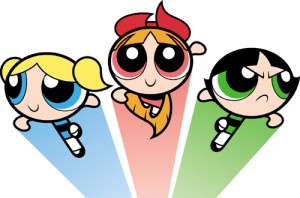 I’m generally pretty wary when any US market decides to “adapt” a foreign trend or make work “inspired” by the work of another culture. This mostly pertains to anime, of course, and not solely for the reason that appropriating a culture’s exports is imperialistic and morally suspect. Every time I browse through the art books in a store, I want to tear apart every How To Draw Manga! book (I kind of want “how-to-draw” books to stop existing altogether, but that’s a different story). For some reason, when animanga is ripped from its origins and repackaged for sell-ability, it becomes an atrocious mess. Surprise, surprise.
I’m generally pretty wary when any US market decides to “adapt” a foreign trend or make work “inspired” by the work of another culture. This mostly pertains to anime, of course, and not solely for the reason that appropriating a culture’s exports is imperialistic and morally suspect. Every time I browse through the art books in a store, I want to tear apart every How To Draw Manga! book (I kind of want “how-to-draw” books to stop existing altogether, but that’s a different story). For some reason, when animanga is ripped from its origins and repackaged for sell-ability, it becomes an atrocious mess. Surprise, surprise.
That being said, there are a handful of Japanese—and anime-inspired American cartoons that are genuinely good and clever—shows like The Powerpuff Girls, Samurai Jack, and Avatar: The Last Airbender. These are shows whose writers clearly did the research, but who also didn’t attempt to make the show an outright ripoff of some anime serial. They share common elements with anime, and they have the occasional reference littered about, a little respect for the origin and the inspiration.
The latest series that falls into the small category of “anime-inspired stuff done well” is a webseries by Monty Oum called RWBY (pronounced “Ruby”). Oum gained notoriety on the internet through making Halo-based fan videos, and not long after was hired by Namco Games as a Combat Designer/Animator for the Afro Samurai video game. Pretty impressive, and that’s just a truncated version of his biography. And now he’s teamed up with Rooster Teeth Productions for a couple projects, including RWBY.
The series follows four young women as they make their way through Beacon Academy, a school where they will learn how to fight the monsters that threaten their world. The girls’ names (and color preferences) make up the four letters of the title: Ruby Rose (red), Weiss Schnee (white), Blake Belladonna (black), and Yang Xiao Long (yellow). This isn’t magical-girl stuff, though; these ladies use weapons. Big, dangerous weapons. In Ruby’s case, for example, she wields a gun-scythe. Yes, it sounds like an impractical and gimmicky weapon, but I challenge you to find fault with its execution. Check out Ruby’s trailer. I have to say, it was probably the gun-scythe that convinced me to watch the rest of the series—though there were many factors that made me stick around.
One of these factors is the characters themselves. The majority of the cast is women and girls. They wipe the floor with gender stereotypes and tropes in many ways, not least of which is talking to each other about important matters that have nothing to do with boys, cute things, or shopping (though there are jokes about doing just that). They not only pass the Bechdel test, but surpass it incredibly. And the male characters that exist are also more than just props for the girls to look at/fawn over/save. The male character with the most background so far, Jaune, is a wonderful example of a young man struggling with the masculine expectations heaped upon him by his family and the society he lives in. And after a good deal of internal and external struggle, he agrees to have lessons in fighting from his closest friend at Beacon—a female warrior with a gentle nature.
I also really appreciate the shamelessness of the references. Ruby, of course, wears a giant red hooded cape everywhere, even with her school uniform. In her trailer, she’s fighting werewolves, and in the series she wears a tanktop with a heart-shaped wolf’s head to bed. The main villain looks exactly Alex from A Clockwork Orange. The Headmaster’s name is Professor Ozpin, and his right-hand lady professor is named Glynda Goodwitch. Jaune’s full name is Jaune Arc. I could go on and on.
The only complaint that I have is one that I almost feel I shouldn’t complain about, and that is the animation. I can be a little snobby about animation quality to the point where I won’t want to watch a show that has a lot of potential if it’s poorly animated. In some ways, this is fair, because television is a visual medium. And, actually, RWBY is not poorly animated, but animated quite well, just in a style of which I am not overly fond. As you can see by the trailer linked above, the entire series is computer-generated, I believe using the software Maya. And again, the animation is smooth as anything, but there are certain actions that are challenging to convey in this way. Fight scenes look awesome, but some of the more mundane activities like writing or trying to pick up an item or a person tend to look choppy. That all being said, the color palette is stunning, and it is obvious that a great deal of care goes into making each short episode.
So what separates RWBY from the anime-“inspired” media of which I am so scornful? First of all, I think that it’s because it’s a labor of love more than an effort to pull in viewers. And it’s that love and dedication that make the audience want more. As a viewer, I don’t feel like I’m being tricked into feeling a certain way for the characters through some long-worn television tropes. I don’t feel that the relationships between characters are forced. I don’t care that the plot is taking its time and leaving me wanting more, because more will inevitably come and it will continue to meet the standards of its viewers.
The first season of RWBY, which is currently all that exists, is up on Crunchyroll for your viewing pleasure. It certainly comes highly recommended by me—to anyone who wants more out of a cartoon, to anyone who would be happy to see some honest portrayal of young women, to anyone who really loves well-designed weapons (there’s a Bo-staff/gun-chucks weapon, too…in fact, most of the weapons are also guns), and to anyone that still loves the idea of themed heroes but could seriously do without the old stereotypes. Monty Oum has created a truly awesome webseries, and I hope that his efforts spearhead a general movement in animated television for US studios and their audiences.

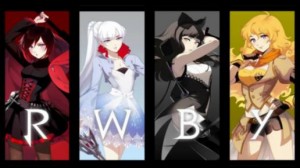



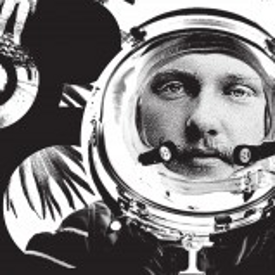

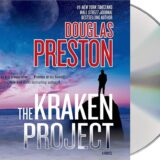
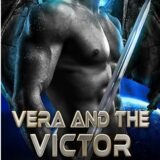

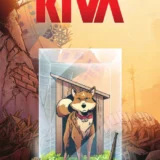

Rooster Teeth has been putting out some great stuff lately and RWBY is no exception. I like how the writers were also able to fit in some RT references as well (like the “Achieve Men” boy band poster). My only real gripe is that the last half of the season following the battle in the woods didn’t have much of a direction and instead was just a series of side plots. Nevertheless, I look forward to season 2.
I understand what you mean about the last half of the season. I feel as though those side plots were there to develop the characters further, and not necessarily to further the plot. Because the episodes are so short, that’s really the only way to do it, I suppose. I’m looking forward to learning more about some of the characters who didn’t get a whole lot of air time, like Nora and Ren.